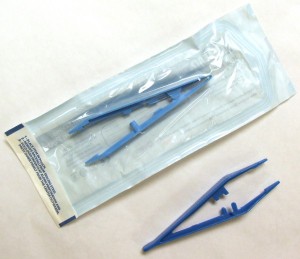Even though splinters may be painful, they are easy to treat. Start by recognizing the type of splinter that has landed into your skin, this can be wood, glass, fibreglass etc.
First aid

The material posted below is for information purposes only. To learn and receive “hands on” training on this and many more subjects enrol in St Mark James first aid and CPR training. After recognizing the material that is projecting from the skin, follow these first aid steps:
- If the object is protruding from the skin and is not deeply submerged into the skin, simply soak the affected region in warm water
- Use a pair of sterile tweezers to remove the foreign object. In case, the object breaks during removal, gently wash the affected area using warm water and try removing the object again with the same tweezers. It may be helpful to use a magnifying glass while removing the object for better sight of the object during removal
- Once you have removed the object from the skin, wash the affected region with soap and water.
- Apply a topical antiseptic ointment in order to prevent infection. Cover the wound with a sterile gauze or band aid
- If the object does not come out, see your doctor
If the object is deeply embedded into your skin, follow these steps:
- Wash the affected region with soap and warm water
- Sterilize a needle by applying rubbing alcohol on it or holding it over a mild flame. Once the needle cools down, use it to break the skin right above the splinter. Try to cause minimum damage to your skin for quick healing
- Use a pair of sterile tweezers to remove the embedded object. If the object is broken, covered in dirt, too deep or if you are not comfortable with removing the object yourself, visit your doctor
- After removing the object, wash the affected region thoroughly with soap and water
- Apply a topical antiseptic ointment to prevent infection and cover the wound with a band aid or sterile gauze
If the wound begins to show signs of infection such as redness, rashes, swelling or discharge, visit your doctor immediately. Additionally, it is recommended that you get a tetanus shot once every 10 years to reduce the susceptibility to infection. If you are infected and have received a tetanus shot within the past 5 year, you may get a booster shot to reduce infection.
